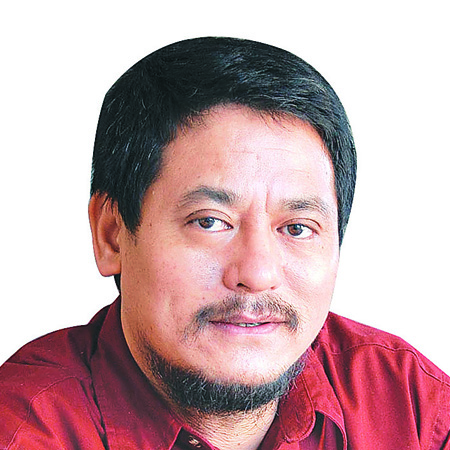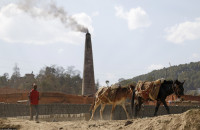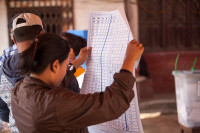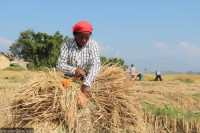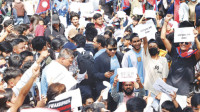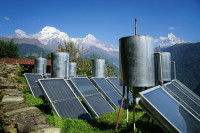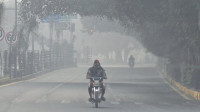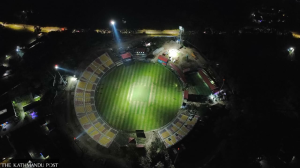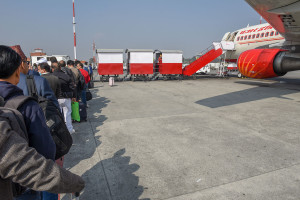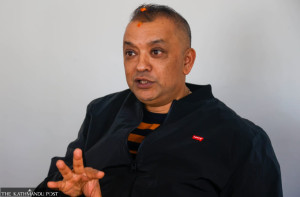Opinion
Poverty in India
India may join the top economic actors at the global level, but on the home ground it has a long way to go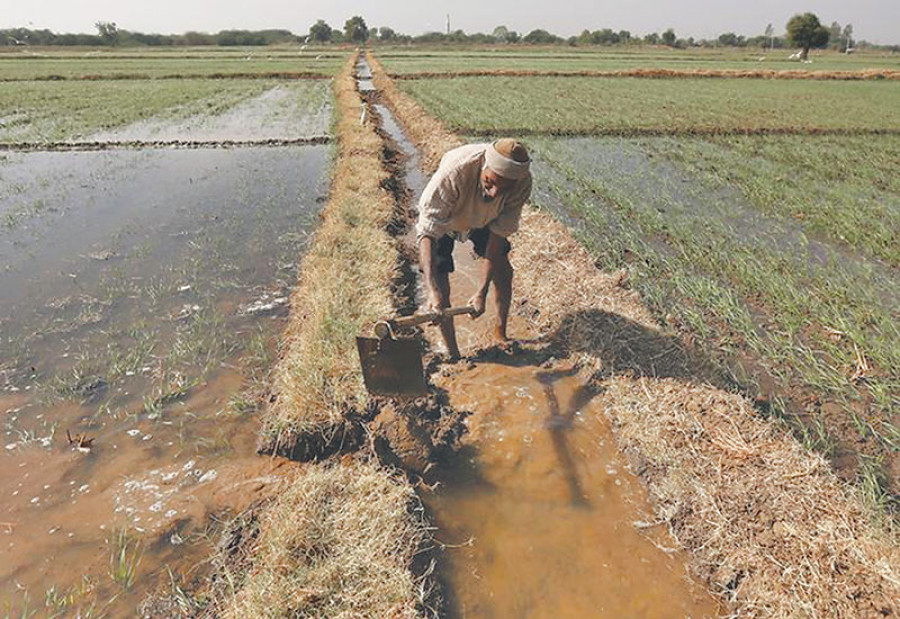
Mahendra P Lama
Poverty in all forms is alarmingly massive in India. The removal of poverty with a distinct slant on progressive reduction of inequalities in income and wealth distribution remained the quintessential slogans right since the First Five Year Plan (1951-56). India’s Economic Survey 2014-15 stated that “Sixty eight years after Independence, poverty remains one of India’s largest and most pressing problems. No nation can become great when the life chances of so many of its citizens are benighted by poor nutrition, limited by poor learning opportunities, and shrivelled by gender discrimination”. Despite the economic growth rate of 6-7 percent in the last few years, nearly half of India’s children under three are malnourished—the largest number in the world. This is a situation where the rate of malnutrition is worse than that in Africa on average.
The nature of poverty is protractedly characterised by symptoms of socio-economic deprivation, politico-cultural alienation, and inaccessibility to state resources and technology and particular type of spatial distribution. Globalisation led economic reforms have triggered a change in the very profile of poverty.
The broad methodological questions like criteria for identifying the people below poverty line, the samples, their geographical coverage and the periodicity have always dominated the poverty studies and their controversial findings. Several expert committees have been appointed, the last being led by Suresh Tendulkar in 2009.
Though most of the estimates do indicate that there has been a steady decline in urban and rural poverty ratio at both the national and provincial levels, the variations in these estimates have been remarkable. A significant decline in the number of people below poverty line from 45.3 percent in 1993-94 to 21.9 percent by 2011-12 has been recorded.
Despite this, over 270 million people are still living in abject poverty. Similarly, the Gini Coefficient based inequality in India was estimated to be 36.8 in 2010-11—much lower than China (41.5), South Africa (57.8), Brazil (53.9) and Sri Lanka (40.3). The quintile income ratio for India was 5.6 in 2010-11, showing the inequality on the top and the bottom quintiles to be lower than a large number of countries.
Macro Intervention
The government has mostly used four broad instruments in addressing poverty and food security. Public distribution system (PDS)—a guardian of food security, has been most widely used. It has largely helped in addressing transient food insecurity. Along with the procurement policy of food, it translates macro-level self-sufficiency in food grains to the micro-level availability by ensuring access to food and other essential items to poor families. The other three are related to wage employment schemes, often linked to food for work programmes, credit based self-employment programmes like Mahatma Gandhi National Rural Employment Guarantee Scheme and more specific nutrition-oriented programmes like Integrated Child Development Services. Government also has been providing subsidies in electricity, fertiliser, water, and also in procuring food like wheat and rice from the farmers by giving them minimum support prices.
Mahatma Gandhi National Rural Employment Guarantee Scheme (MGNREGS), 2006, popularly known as the “100 days programme” is now a household name in India. It has been an innovative and a largely successful programme. It has reached the lowest echelon and has been taken advantage by poor households in plain lands, coastal areas, deserts, hills and Himalayan regions. There have been huge leakages, mismanagement and high transaction costs and lack of skill among the employment seekers. However, the scope of this essentially rural asset creating and livelihood project has been expanded. Some convergences of this programme with project like total sanitation campaign has been done.
The National Food Security Act, 2013 is another initiative that provides subsidised food grains to approximately two thirds of the population. Launched with a lot of political conviction, it attracted a range of sustainability questions. Under the Antyodaya Anna Yojana, this Act provides beneficiaries 5 kilograms of food like rice at Rs3 per kg; wheat at Rs2 per kg and coarse grains at Rs1 per kg.
The three direct benefit transfers (JAM) schemes—Jan Dhan (bank deposits), Aadhaar Cards (unique identity number given to individuals) and mobile phones have been launched to take these subsidies to the individual level and also to cut down the heavy leakages. These saved resources could even generate public investment. India’s Economic Survey forthrightly stated that the kerosene subsidy extended through PDS was Rs204.15 billion in 2011-12 out of which 41 percent was lost as leakage. Similarly out of the subsidies allocated under different heads in the PDS system, 15 percent of rice, 54 percent of wheat and 48 percent of sugar were lost as leakages. Most water subsidies are allocated to private taps, whereas 60 percent of poor households get their water from public taps. In other words, subsidies have been usurped by those who are relatively powerful and have access to political authority.
The JAM-trinity tries to make seamless transfer to individual bank accounts and opens up potential for expanding the set of welfare and anti-poverty measures and ‘could boost household consumption and asset ownership and reduce food security problems’.
Delivery Mechanism
The biggest challenge that beset the entire operation has been delivery mechanism and instrument. The question is how to reach the poor households directly and accurately. It’s formidable because there are huge topographical variation, unparalleled patterns of demographic settlements and more seriously, diverse social and cultural practices. Varying political dispensations across the states add further complexity. Traditional mechanisms mainly through the top down administrative hierarchy—the block development officer being the lowest in the district administration framework—has now been gradually replaced by the constitutional provisions of village Panchayats, the middle rung being the Panchayat Samity and the highest being the Zilla Parishad at the district level.
There are states like Kerala and Madhya Pradesh, which have done fairly well in this mission to empower the people at the grass root. Some of these states have already given the responsibilities of running primary schools and primary health centres, developing and implementing local projects and also monitoring some of the major governmental projects in their localities. There is a lot of resistance on the devolution of power as it is definitely going to reduce bureaucratic hold over development process. At the same time, it is directly going to affect the interest of those stakeholders that survived on cuts and leakages of the funds.
Over the years, several grass root actions have been undertaken to ensure alternate routes and sustainable means. These initiatives have mostly come from non-governmental organisations with strong voluntary instincts and commitment. Ralegaon Sidhi in Maharashtra led by Gandhian community leader Anna Hazare; Pani Panchayats of Village Mahur in Maharastra; Bio-Village in Pondicherry; Samridha Krishak Yojana of Assam; TANWA Woman Agriculture Project of Tamil Nadu are some of the examples of these micro level interventions. Their operational features are critically driven by i) their own community and geography centric orientations; ii) strong and reliable local leadership; iii) use of local resources and knowledge; iv) application of appropriate yet friendly technology and v) regular and visible impact assessment by the communities themselves. All these grass root actions brought forward high degree of human security practices.
Despite the onslaught of second generation reforms and India joining the club of top economic actors at the global level, there is a long way to go for this nation before it can boast of substantive achievements in these critical areas. In other experimentations, it is actually not just the pace of economic growth, but the orientation and quality of growth that has made the difference in poverty alleviation ventures.
Lama teaches at Jawaharlal Nehru University, New Delhi and was the Chief Economic Adviser in the Government of Sikkim from 2000-2007




 11.12°C Kathmandu
11.12°C Kathmandu